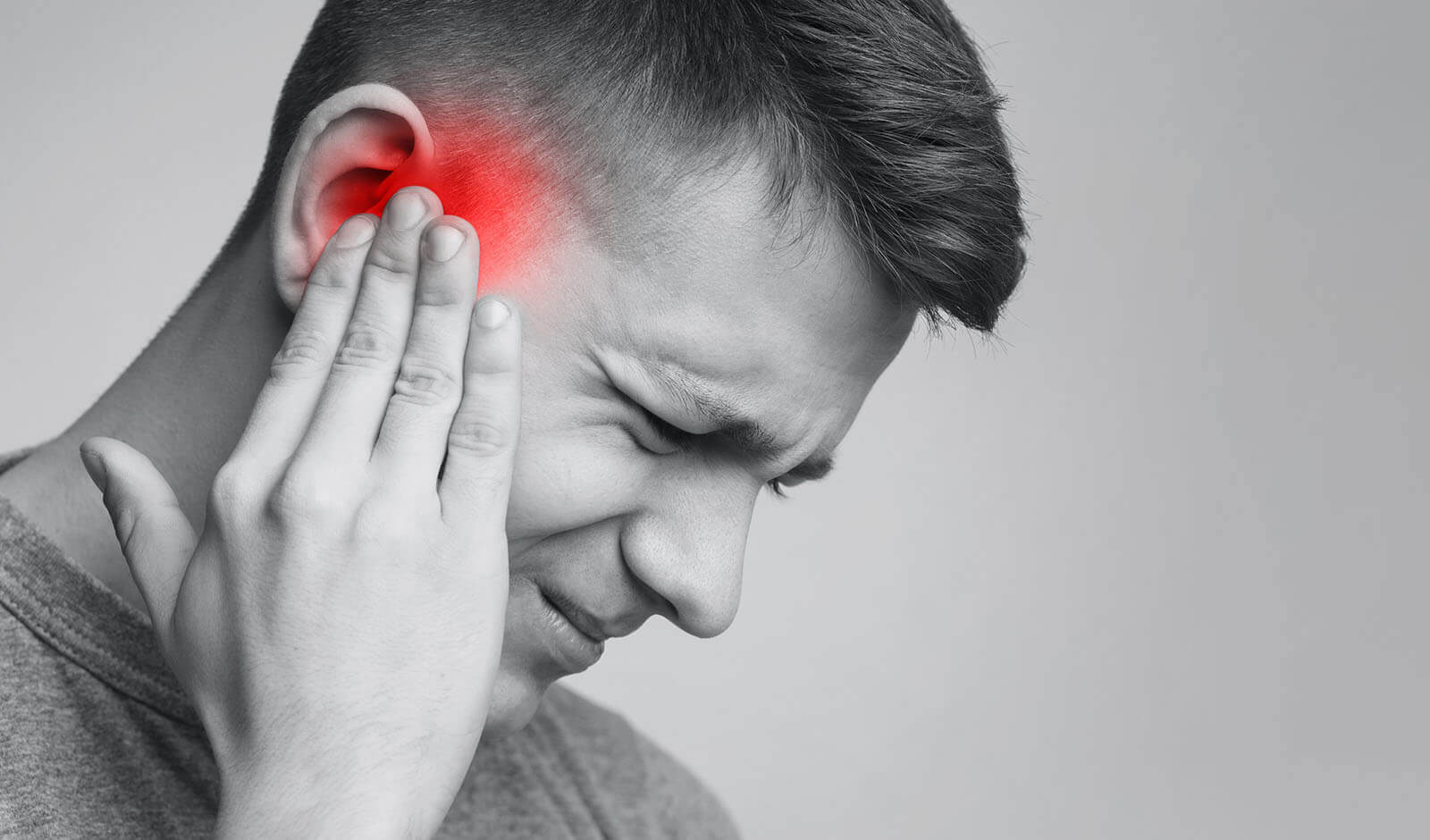Do you feel increasingly sensitive to sound? If normal sounds, like driving through traffic, loud chewing, a phone ringing, or a dog barking cause you discomfort or pain, you may be suffering from decreased sound tolerance or hyperacusis.
Hyperacusis is a relatively rare hearing disorder that amplifies the everyday sounds around you. While not life-threatening, hyperacusis can make life complicated, strain social relationships, impede your work, and add unneeded stress to the activities you enjoy and love. If you think taking off in an airplane, attending a concert, or cheering on your favorite sports team can be loud, imagine trying to do any of these things while suffering from hyperacusis. This is the daily reality for many people.
Compared to tinnitus (ringing in the ears) which affects millions of people, hyperacusis is much rarer (only about 1 out of 50,000 people). This could be why many people may not know all the facts about hyperacusis, its different types, what causes it, or what this hearing disorder even is.
Living a life filled with the irritation and pain caused by hyperacusis does not need to define you. There is hope and help available. Here, we look into understanding hyperacusis, its causes, and examine treatment options.
WHAT IS HYPERACUSIS?
According to the American Speech-Language-Hearing Association, hyperacusis is a hearing disorder that causes people to experience everyday noises at such high levels that it causes irritation, anxiety, or even physical pain.
While rare, hyperacusis can make the daily life of those who suffer from it dramatically difficult and uncomfortable. Not only do those with hyperacusis have difficulty being around excessively loud noises, like an airplane, gun firing, or live music, but even moderate to soft environmental sounds, like emptying the dishwasher or loud speech, can be challenging to adjust to.
Hyperacusis can be difficult to understand or diagnose because it occurs on a spectrum of severity, takes several forms, and results from many different medical conditions or accidents. Below, we distinguish between the main types of hyperacusis and detail some of the leading causes of this hearing disorder.
FORMS OF HYPERACUSIS
There are two types of hyperacusis: cochlear or vestibular.
Cochlear hyperacusis, which is the most common form, causes a mild to severe pain in the ear, resulting from intolerance to everyday noises.
On the other hand, vestibular hyperacusis has effects more similar to someone experiencing vertigo—dizziness, nausea, and a general sense of imbalance. The difference between these two forms of hyperacusis stems from which part of the ear is impacted.
In addition to the two forms of hyperacusis, cochlear, or vestibular, there are actually four forms of hyperacusis that shape how you experience the medical condition. Hyperacusis can be experienced as loudness, annoyance, fear, or pain.
CAUSES OF HYPERACUSIS
DAMAGE TO THE COCHLEA
According to the American Tinnitus Association, hyperacusis is commonly caused by damage to the cochlea or the inner ear. The cochlea plays a vital role in processing sounds and transmitting them through the ear and then to the brain as electrical impulses.
Damage to the sensory receptor cells (i.e. inner and outer hair cells) in the cochlea is a primary cause of hyperacusis. Excessive exposure to loud noises like live music, cars, or construction equipment can damage these cells. When exposed to prolonged loud noises, it’s critical to wear earplugs or other forms of ear protection.
MIGRAINES
By some reports, migraines are the leading cause of hyperacusis. In a similar fashion to hyperacusis, migraines can be brought on by sensitivity to external stimuli (like light or sound), leading to severe headaches and nausea. Many patients that get migraines can only find relief in dark and quiet places that reduce the stimulation received by the brain.
BELL’S PALSY
Bell’s palsy is a condition that affects the muscles of the face, often causing the muscles on one side of your face to weaken. Luckily, in most cases, the symptoms fade after a few weeks, but some patients do experience a more chronic form of this condition (one which doctors have yet to determine a definitive cause). Some victims of Bell’s Palsy also experience hyperacusis, brought on by a weakening of the auditory system.
MENIERE’S DISEASE
Over half a million people have Meniere’s Disease in the United States. This hearing disorder causes vertigo (dizziness, imbalance, and nausea) and inner ear damage resulting from a build-up of fluid in the inner ear. This accumulation of fluid, in addition to vertigo symptoms, can lead to sensitivity to sound.
LYME DISEASE
Especially in the summer months, when we want to get outside and explore, Lyme disease becomes an increasing health threat. A condition transferred to humans through tick bites, Lyme disease is the most widespread vector-borne disease in the United States. Symptoms of Lyme disease commonly include fatigue, headaches, and an irritating skin rash; however, studies have shown that up to 48% percent of late-stage Lyme disease patients also develop hyperacusis.
TMJ DISORDER
The two joints connecting your lower jaw to your skull are called the temporomandibular joints (TMJ). These joints rotate in front of the ears and essentially allow your jaw to function. Doctors see them as some of the most complex joints in the entire body. When these joints are stressed or damaged, you can develop TMD, or a temporomandibular disorder, which may include myofascial pain, derangement of the joint, or degenerative joint disease. Experiencing any of these disorders can exacerbate hyperacusis or tinnitus.
TREATMENT OPTIONS
Don’t let the irritation and pain caused by everyday noises ruin your life, especially when there is help. It’s important to note that there is currently no magic pill or prescription to treat hearing sensitivity; however, there are great options to help you live a better life.
In some cases, symptoms will fade in time, primarily if caused by minor trauma to the hearing system or brain. However, in more severe cases, symptoms remain chronic and treatment should be considered. As discussed in The Hearing Journal, sound therapy is one effective treatment option and works by retraining the brain to better adjust to everyday noises. This is done by using a prescriptive sound generator that gradually allows the patient to adapt to external sounds over several months. Additionally, there are counseling options available to help you understand and cope with stress and anxiety.
FIND RELIEF
The world around you has a lot to say. You should not be afraid to listen. If you’re experiencing heightened sensitivity to everyday noises, do not wait any longer. Take our hyperacusis impact survey to determine the severity of your hyperacusis.
If you are ready to take control of your sound sensitivity, schedule an appointment online, or give us a call at 720-344-7600.
schedule an appointment

